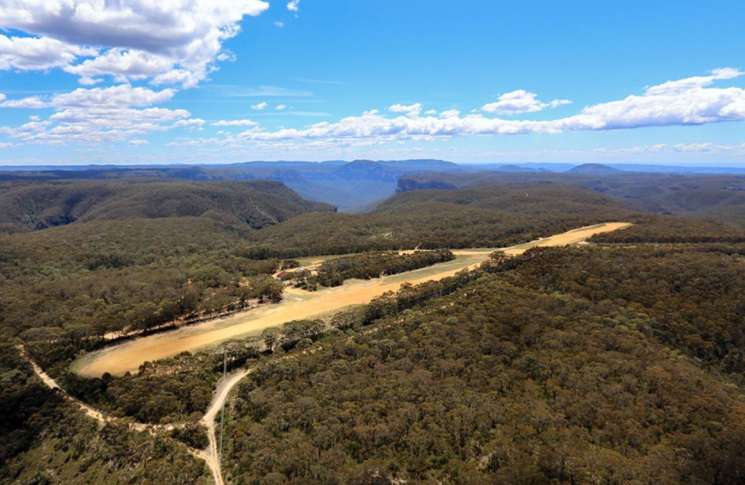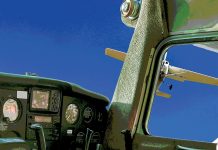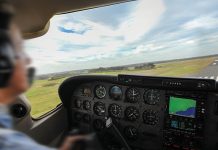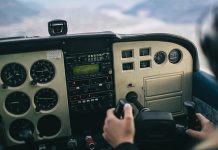By Christopher Kelman
He was heading straight for disaster with 2 passengers on board, when something clicked in. How one pilot learnt his limitations and strengths.
This flight occurred in the early 2000s when the Katoomba or Medlow Bath Airfield was still operational. It was closed in 2021. As an airfield it had everything going against it. It was set in rugged terrain at 3,280 feet AMSL near the edge of the escarpment in the NSW Blue Mountains, forest surrounding goat-track-style dirt runways. High temperatures and low-level turbulence and windshear are common in summer with density altitudes often over 6,000 feet. In winter, low cloud, snow and gales with orographic turbulence. On top of this, high-voltage powerlines had been installed to the east and west of the airfield.
I used the airfield on a regular basis as it was convenient for family visits, landing there on over 30 occasions in my C210. On this particular visit, cloud base was around 2,000 feet AGL and I did the usual en-route descent to arrive at 1,000 feet over the airfield. I had made Area and CTAF calls, confirmed wind direction – a 10-knot north-easterly, and chose my runway. I did not know at the time, but family members were already waiting to meet us on the ground, along with a few other locals.
I made a right turn onto crosswind then downwind and base. Of course, as soon as I left the immediate vicinity of the airfield, it was not so easy to see the runways, especially from the left seat, and I was relying more on a sense of where I was relative to the gaps in the forest.
I turned onto final at 500 feet and continued my descent, all good; gear down, pitch, mixture and flaps set, speed 75knots, all was as usual and my aiming point on the dirt strip was approaching fast.
Suddenly, I started to feel uneasy – I’m not sure why but compared to a ‘normal’ approach at Katoomba, things did not look quite right. Maybe it was that the surface looked rougher than I remembered, maybe the runway looked a bit shorter than I was used to or perhaps it was a glimpse of the powerlines hiding in the trees. Anyway, at about 50 feet AGL from somewhere in my unconscious a decision was made and before I could actually say ‘going around’ – it was happening. Full power, gear up, flaps etc.
The aircraft climbed quickly but clearance over the trees was a little closer than I liked. Safely back at circuit height, I reassessed the situation. I soon realised that I had just completed an attempted landing on a different runway – the one that was supposedly under repair and only 640 metres long. Not at all what I had planned…
After completing a more comfortable approach and landing on the correct runway, I taxied up to the parking area only to receive a very heated welcome from my ‘ground crew’.
Apparently, a local pilot had by chance been with them and had realised my error while I was on final. He had then frantically tried to contact me on a portable radio, either on the wrong frequency – or – maybe I just didn’t hear him. I can’t deny this as a possibility as I have read of others even ignoring intrusive gear warning alarms on final. My family, having overheard his radio messages, were of course beside themselves with anxiety, fearing that I would be next to join the infamous list of Katoomba casualties.
The 210 is a very capable machine, but a landing on this too-short too-rough runway could only have resulted in a bad outcome – either gear collapse with an undignified excursion into the trees beside the runway (as happened to a Grumman Tiger in 1996 and worse to a C206 in 2004) or a trip into the woods at the end of the runway. All this with family present to witness.
Why am I not on that list? I can only say that I think it was the result of excellent training. I did not consciously make that decision to abort the landing, my training must have kicked in and done it for me. A touch and go would have been impossible on this short runway with trees, so I made the decision not a moment too late.
I have a set of varied but distinguished instructors to thank for this – as do my two passengers at the time.
Lessons learnt
The error was entirely mine, so what have I done to reduce the possibility of this sort of mistake happening again?
I have realised it is easy for me to get disoriented at low level, especially over forest, I do not have the inbuilt compass that some pilots seem to enjoy. So, in combination with this awareness of my own limitations, I have introduced some additional checks in my routine:
- I make sure that I am fully familiar with the runway layout at a destination airfield before arrival and orient myself to this from the direction I am coming from.
- I now include setting the DG heading bug to the runway heading when joining the circuit – this is useful for situational awareness on all circuit legs.
- I have added more items to my finals checks:
- Is my heading the same as the chosen runway heading?
- Is a landing clearance required/granted?
- Finally, always trust your feelings – these are based on experience and if it doesn’t feel right, don’t do it!
Have you had a close call?
8 in 10 pilots say they learn best from other pilots and your narrow escape can be a valuable lesson.
We invite you to share your experience to help us improve aviation safety, whatever your role. You may be eligible for a free gift just for submitting your story.
Find out more and share your close call here.





